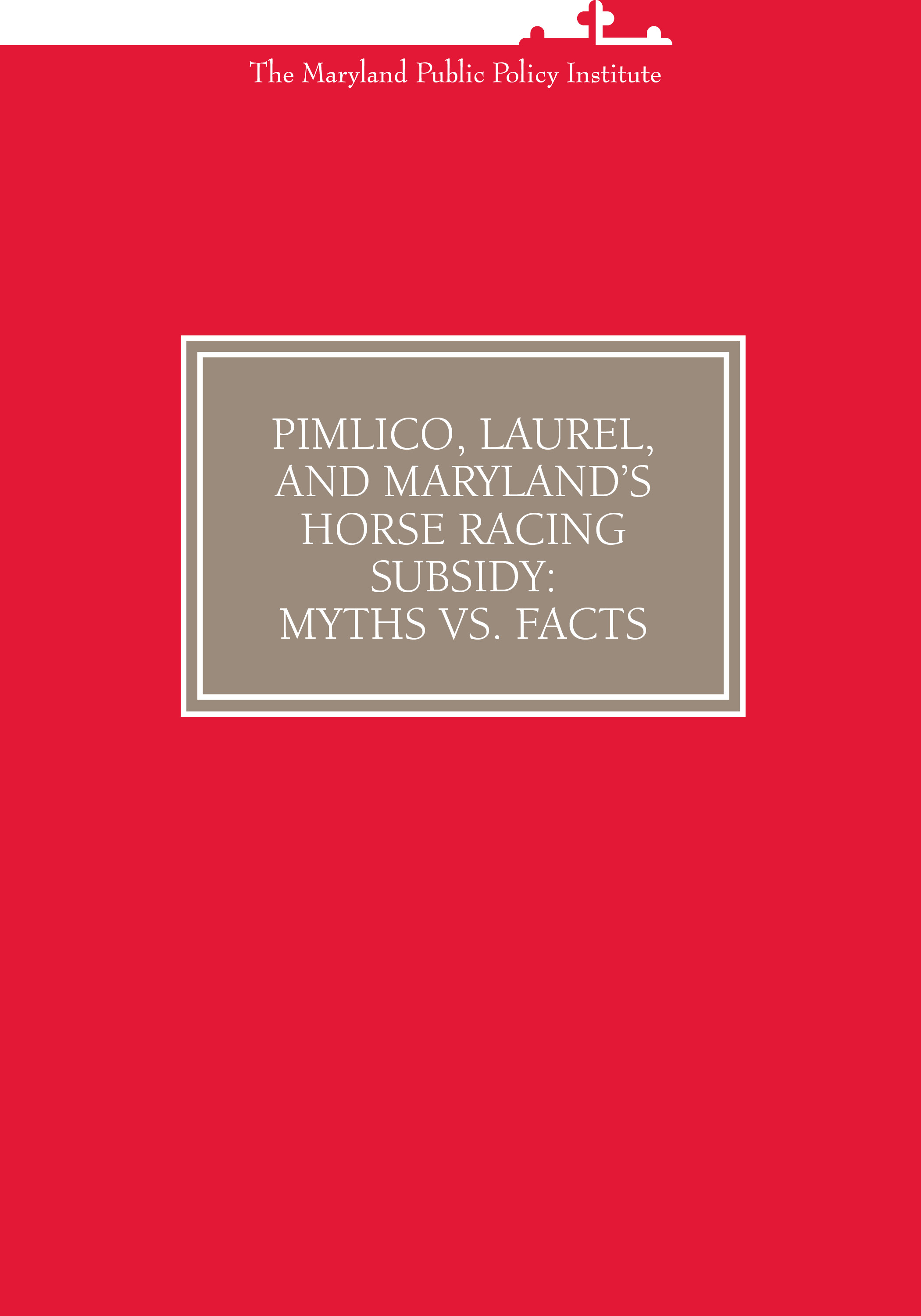
Pimlico, Laurel, and Maryland's Horse Racing Subsidy: Myths Vs. Facts
On May 7th, 2020, Maryland’s horse racing advocates achieved a major victory. Gov. Larry Hogan allowed the controversial Racing and Community Development Act of 2020[1] (RCDA) to become law without his signature,[2] thereby authorizing the Maryland Stadium Authority to issue $375 million in bonds to replace the state’s two main horse racetracks with gold-plated facilities. If everything works out as planned, Laurel Park in Anne Arundel County will be renovated first in 2021, then Pimlico Racecourse in Baltimore will be renovated next, into a multi-use facility for racing and other events. While much uncertainties lie ahead due to the ongoing global COVID-19 pandemic, the state hopes to issue bonds in 2021. The Maryland Stadium Authority also recently issued a request for proposal for architects who would like to redesign the tracks.[3]
In short, the RCDA epitomizes Maryland’s recent history of fiscal imprudence. Assuming no cost overruns, overhauling the two racetracks will cost $389 million. To finance the project, the state will jeopardize its AAA bond rating by borrowing $348 million in a form of 30-year bonds. The cost of repaying the bonds will be $17 million a year over 30 years — a total of $510 million.
[1] Maryland General Assembly, Senate Bill 987, http://mgaleg.maryland.gov/2020RS/bills/sb/sb0987E.pdf
[2] Jeff Barker, “Landmark Plan to Preserve Preakness Stakes in Baltimore Will Become a Law Without Governor’s Signature,” The Baltimore Sun, May 7, 2020, https://www.baltimoresun.com/sports/horse-racing/bs-md-preakness-baltimore-20200507-m6s6bfadknb5bcwajwqpxte4je-story.html
[3] Ed Gunts, “Pimlico makeover repositions racetrack as events venue, community hub,” Baltimore Fishbowl, August 27, 2020, https://baltimorefishbowl.com/stories/pimlico-makeover-repositions-racetrack-as-events-venue-community-hub/





